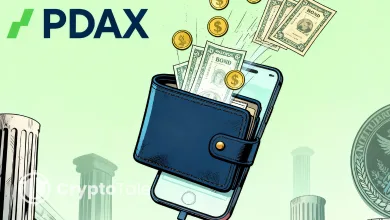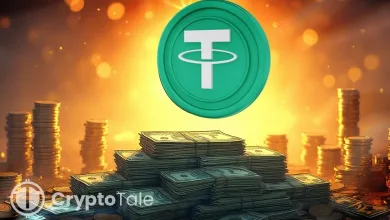VanEck CEO Backs Ethereum as Wall Street’s Settlement Layer

- Ethereum processes most stablecoin transfers as banks and funds shift to blockchain.
- VanEck warned Wall Street firms to adapt to tokens or risk losing their clients.
- Ethereum holds 71% of DeFi assets, reinforcing its role in global liquidity and settlement.
Ethereum is expanding its role beyond a smart contract network, positioning itself as the settlement layer for traditional financial systems. As the utility of stablecoins increases, banks and financial service firms now face immediate pressure to update their infrastructure. If clients demand stablecoin transactions, banks must adapt or risk losing those clients to other competitors.
In an interview, VanEck CEO and President Jan van Eck emphasized the prominence of stablecoins and also described Ethereum as the ‘Wall Street Token’. The CEO stated that as stablecoins are integrated into financial institutions, this makes Ethereum enhance its discussion on scaling tokenized money.
Van Eck further revealed that when Wall Street professionals enquired over the most suitable blockchain for development, he had suggested Ethereum as it provides the likely answer, reinforcing its role as the blockchain connecting traditional finance with digital assets.
Institutional Activity and Industry Shifts
This year, Ethereum has drawn criticism for its performance and scalability, but VanEck commended the platform’s resiliency in a recent statement. He highlighted that the company actively manages ETFs, which represent its agile mindset toward the financial market’s adoption of digital assets, and these strategies exemplify how the company positions itself with the tokenization and settlement rails, which are continuously growing in adoption.
The Wall Street Journal cited a report that Ethereum has achieved $1.2 trillion in transactional activity this year, with the majority coming from stablecoin transactions like USDC and Tether. The tokenization of money market funds and other real-world assets also contributes to the volume. Institutional investors have clearly stepped in on Ethereum’s network activity, which further validates the network’s claim as the preferred infrastructure for wide adoption.
VanEck’s July crypto recap further confirms Ethereum’s strong position, pinpointing that over 62% of all stablecoin transfers in 2025 took place on Ethereum. Additionally, the network holds 71 percent of assets locked in decentralized finance platforms, a sign of its central role in providing liquidity and settlement for the wider ecosystem.
S&P Global has supported this perspective, noting that Ethereum offers an interoperability path that permissioned blockchains cannot match. Many private networks already run on Ethereum’s Virtual Machine, suggesting that Ethereum could consolidate its role as finance increasingly embraces blockchain infrastructure.
Related: Gemini Launches Ethereum & Solana Staking in the U.K. with 6% APR
Market Scenario of Ethereum
Ethereum is trading at $4,577.02, down 1.18% in the last 24 hours, according to CoinMarketCap. The cryptocurrency’s market cap is $552.47 billion, and its fully diluted valuation is the same as of press time.
Even though the 24-hour trading volume is $42.05 billion, it has shrunk by 16.7% compared to previous figures, and its total and circulating supply is 120.7 million ETH, which remains unchanged from its previous day.
The intraday price chart indicates volatility throughout the session, with prices reaching $4,618 and then falling back to less than $4,550, marking the shift from buying to selling pressure throughout the trading hours. Despite the factors, Ethereum continues to be the second-largest cryptocurrency and a strong contender in global finance.





